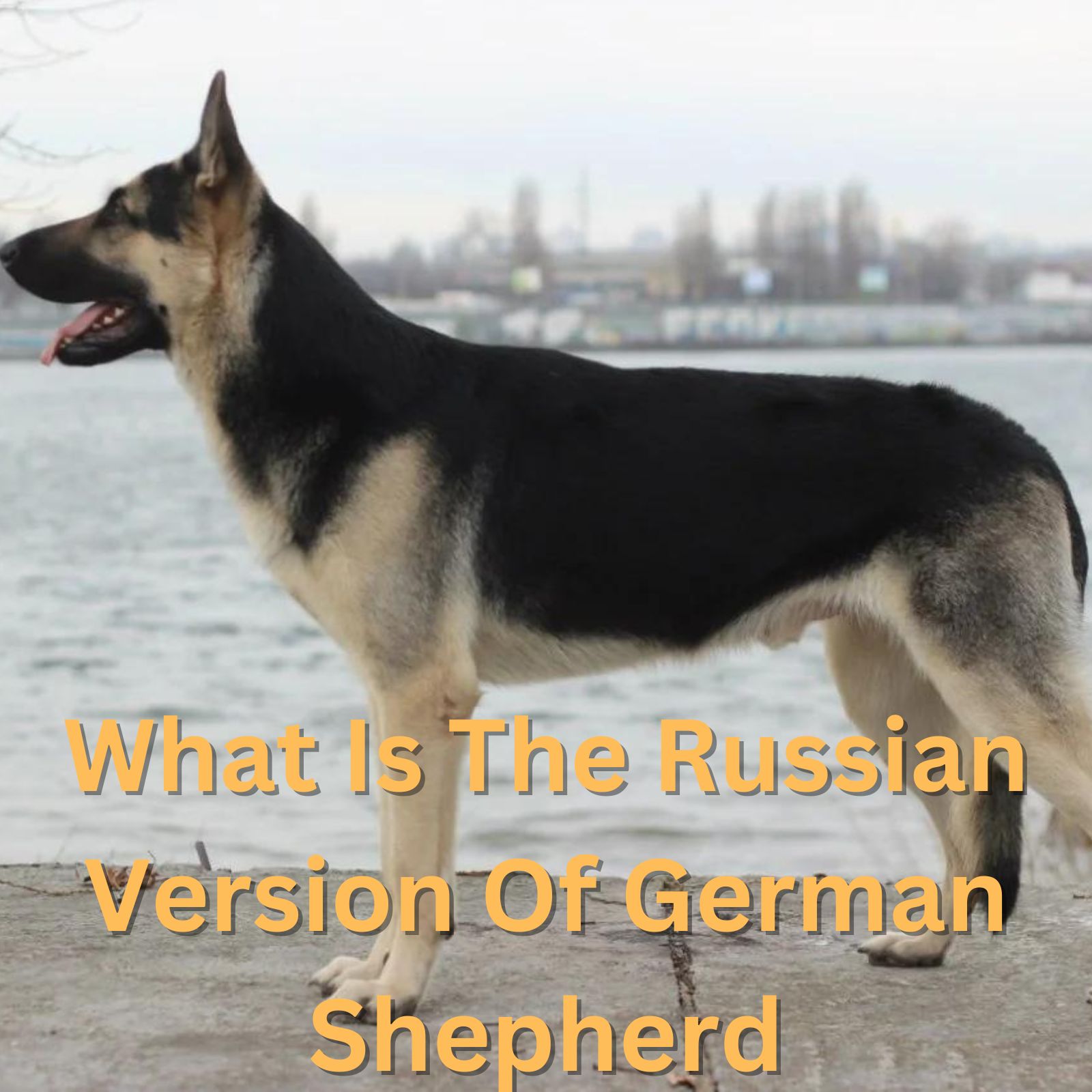
What Is The Russian Version Of German Shepherd
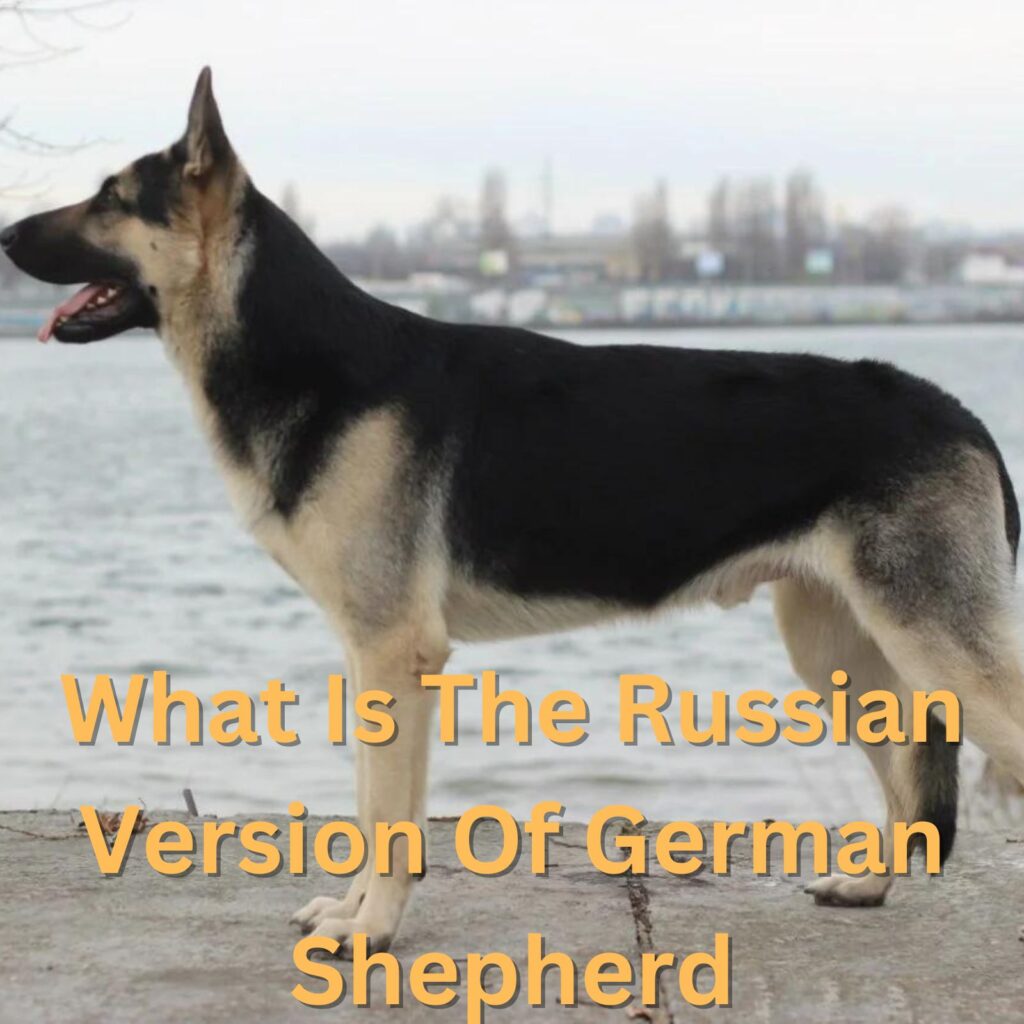
What Is The Russian Version Of German Shepherd
The East European Shepherd is often considered the Russian ‘twin’ to the German Shepherd, offering similar protective and working traits characterized within this breed lineage across various demographics.Sure thing! Let’s start with a basic table comparison to highlight the differences and similarities between the Russian version of German Shepherds, also known as East-European Shepherd, and the most common German Shepherd breed we’re familiar with.
| Features | East-European Shepherd | German Shepherd |
|---|---|---|
| Country of Origin | Russia | Germany |
| Average Size | 24-28 Inches | 22-26 Inches |
| Weight Range | 66-100 lbs | 50-90 lbs |
| Lifespan | 10-14 years | 9-13 years |
| Temperament | Intelligent, Confident, Brave | Confident, Courageous, Smart |
Understanding the East-European Shepherd
The East-European Shepherd is essentially the Russian version of the German Shepherd. This breed was created after World War II by selectively breeding German Shepherds that the Red Army captured during the warsource. The goal was to create a variation more suitable for the harsh climates of Russia and they certainly achieved that with the East-European Shepherd.
Aside from weather adaptability, the East-European Shepherd was also designed to have enhancements in disease resistance and better mental stability in comparison to the German Shepherd. It allowed its adoption for several roles such as police work, search and rescue missions, and even as disability assistance dogs. As the famous dog advocate, Roger Caras said about dogs, “Dogs are not our whole life, but they make our lives whole”.
In terms of physical characteristics, the East-European Shepherd is typically larger than the German Shepherd. A fully grown male can weigh upto 100 pounds and stand up to 28 inches tall. Unlike its German counterpart, which is known for a more sloping back, the East-European Shepherd has a straighter back which some argue is healthier for the dog.
When it comes to temperament, just like the German Shepherd, the East-European Shepherd is known to be intelligent, brave, and confident. These dogs are highly trainable, making them still a top choice for various working roles.
Understanding the Russian German Shepherd: Unique Traits and Characteristics
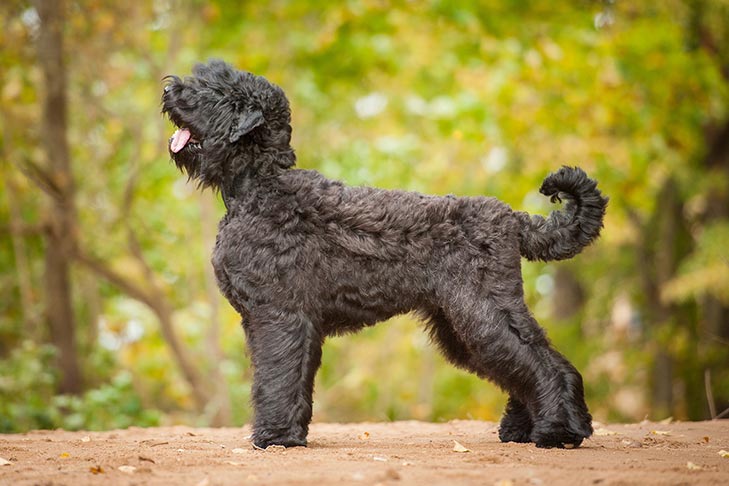
When shedding light on the enigmatic and unique Russian version of the German Shepherd, it’s essential to keep a perceptible distinction from the native German variety in mind. The Russian German Shepherd, a dog breed that’s also known as East-European Shepherd (Восточно-европейская овчарка or VEO), is actually a variant of the popular German Shepherd but with significant differences.
Distinguishing Marks of the Russian German Shepherd
The first thing you’ll notice about the Russian German Shepherd is their size. They are typically larger than their German counterparts. Here are some noticeable characteristic traits:
- Size: Male Russian Shepherds can stand up to 30 inches tall at the shoulder – considerably taller than the German Shepherd.
- Weight: They quite commonly weigh between 75 to 105 pounds, more than the average 50 to 90 pounds for the usual German Shepherd.
- Fur: Their coat is notably denser and designed to withstand the severe Russian winters. In contrast, German Shepherds have a double coat of medium length.
Unique Traits of Russian GSD
The Russians bred these dogs not only for their size but also for their mental and physical strength. Some unique traits include:
- Psychological Strength:Russian German Shepherds can handle stressful situations better than the other breeds due to specialized breeding
- Nose Work: Their heightened sense of smell makes them valuable search and rescue animals (American Kennel Club)
- Physical Endurance: These shepherds come into their own in harsh weather conditions and challenging terrains thanks to their strong constitution and outstanding endurance.
Health Matters of Russian German Shepherds
Like any large-breed dog, Russian German Shepherds might tend to face specific diseases and health complications. They include:
| Disease | Description |
|---|---|
| Hip Dysplasia | A disorder that occurs when the hip joint doesn’t grow properly, leading to deterioration and potential loss of function |
| Elbow Dysplasia | It’s a condition involving multiple developmental abnormalities of the elbow-joint in the dog |
| Degenerative Spinal Stenosis | It is a progressive disease of the spine, particularly common in larger dogs |
“Dogs are not our whole life, but they make our lives whole.” – Roger Caras. This quote rings true, even more so when we think about such a dignified and versatile companion like the Russian version of the German Shepherd. Initially bred to adapt and serve under severe weather and working conditions, this breed not only exhibits exceptional physicality but also a resilient mindset. From serving as a search and rescue animal to being a loyal family pet, these canines are a testament to versatility and dedication. Recognizing and understanding their unique characteristics will ensure a lasting and harmonious relationship between this magnificent canine and its owner.
Training Tips for Successful Management of a Russian German Shepherd
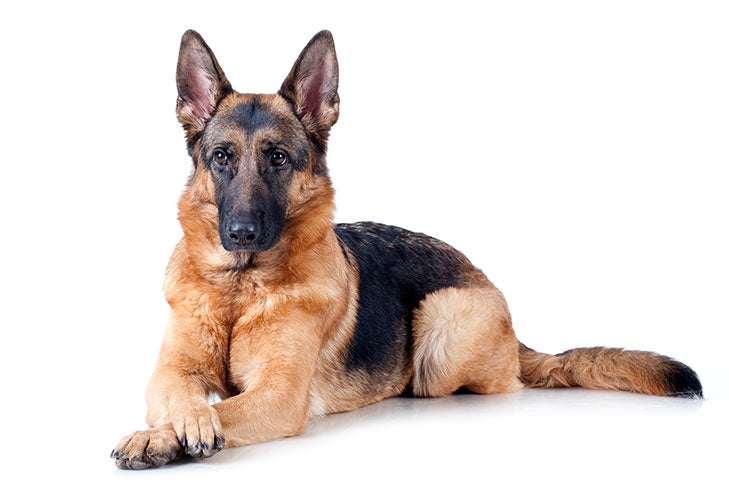
The Russian German Shepherd, or East European Shepherd as it’s known more broadly, is an intriguing version of the well-known German Shepherd Dog. Boasting a robust look similar to their German counterparts, the Russian variant may sometimes portray a daunting image, but don’t be fooled! These intelligent creatures are hailed for their excellent work ethic and undying loyalty.
As with any breed, effective training techniques can play an impressive role in how your Russian German Shepard behaves and interacts with its environment.
Dog Training Tips Tailored Specifically for East European Shepherds
- Start Early: The first step towards achieving this goal is by starting the training at a young age. Puppies are more adaptive to learning new things. A study conducted by the American Kennel Club states that training can begin as early as seven weeks old.
- Socialization: Exposing them to a variety of life situations at an early stage is crucial. This ensures they grow up to be well-adjusted adults. It aids in reducing fearfulness and aggression in dogs.
- Consistency: Consistency is key with these breeds – avoid confusing them with mixed messages. Always use the same words for commands and apply rules uniformly.
- Use Reward-Based Training: Reward-based training is universally acknowledged as one of the most effective ways of shaping behavior in dogs. When your dog shows desired behavior, reward them. This encourages the repetition of the correct behavior.
- Avoid Harsh Punishments: Russian German Shepherds are highly sensitive. Harsh punishments can heighten fear responses and provoke unwanted behaviors.
Understanding the Uniqueness of the Russian German Shepherd
To successfully train these beautiful creatures, it’s important to understand what makes the Russian version of the German Shepherd unique. You see, the East European Shepherds were bred in Russia to adapt to harsh weather conditions and complex tasks. As such, they are high energy, extremely intelligent, and require intensive mental stimulation to keep boredom at bay.
| Characteristic | Description |
|---|---|
| Intelligence | These dogs are highly intelligent and quick learners. Keep their minds stimulated with puzzle toys and brain games. |
| High Energy | They require lots of physical exercise. Long walks or runs and plenty of playtime can help channel this energy appropriately. |
| Weather Resilient | Their double coat makes them resilient to cold weather. However, they also need to find relief from heat during hot climates. Make sure your dog has access to shade and plenty of freshwater. |
In the astute words of Roger Caras, “Dogs live about 12 years…it’s a good round number and easier to deal with than 8,220 days.”1 So when you’re training your Russian German Shepherd remember, patience is the name of the game. Enjoy every single day with them. They’ll make each day brighter with their wagging tail and infectious spirit!
References:
1. Roger Caras Quote. https://quoteinvestigator.com/2012/05/17/pet-short-life/
Health Care Guide: Ensuring Optimum Health for Your Russian German Shepherd
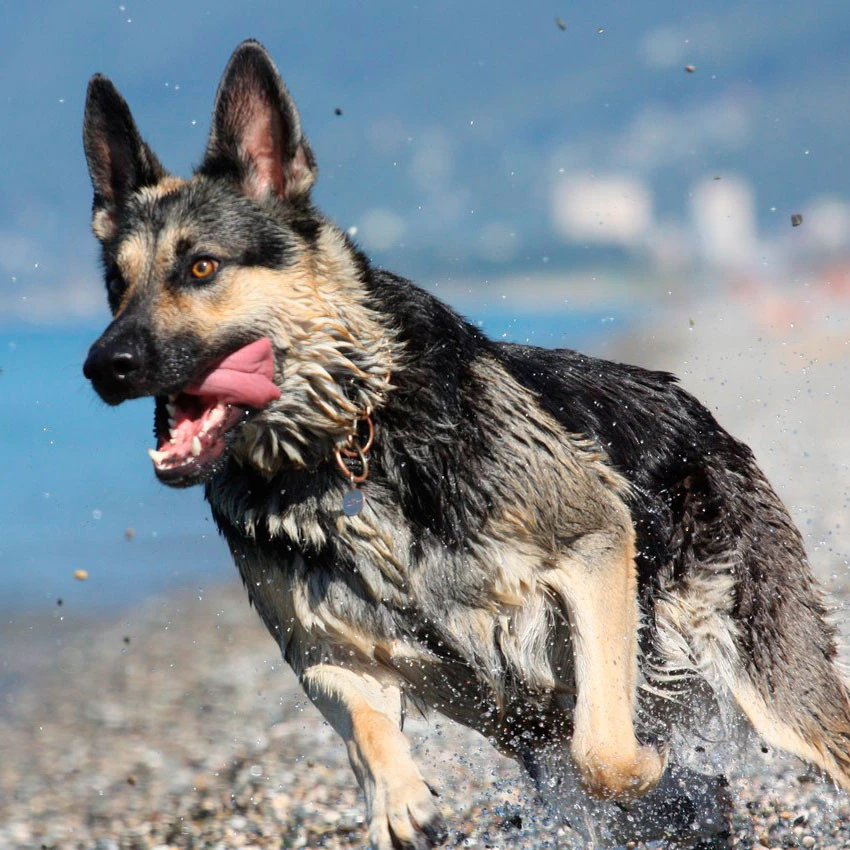
East European Shepherd
The Russian German Shepherd, also known as the East-European Shepherd, is a variant of the popular German Shepherd breed we all know and love. Some key differences distinguish the two breeds; they are essentially ‘cousins’ rather than ‘siblings.’ One fundamental difference lies in the physical structure; the Russian variant typically has a more balanced physique and is less prone to hip dysplasia, a common issue among German Shepherds (American Kennel Club). They’re also intentionally bred to withstand colder climates, possessing a dense undercoat for this purpose.
Health Care Guide
For an optimum health care guide for the Russian German Shepherd:
- Regular Vet Checks: Regular vet checks are crucial. Other than routine examinations, these checks could help early detection of health issues if any, such as heart anomalies. With their lineage’s proneness to bloat, ask your vet how to recognize and prevent it.
- Proper Nutrition: Feed them a well-balanced diet rich in proteins, carbohydrates, vitamins, and minerals. Good nutrition is vital for their overall wellbeing- from fur and skin health to drive and energy levels. Avoid overfeeding as obesity can lead to numerous health problems.
- Adequate Exercise: Being an active and intelligent breed, the East-European Shepherd (Russian German Shepherd) requires plenty of mental and physical exercises to keep them healthy and happy. It aids in maintaining a healthy weight and keeping mental disorders like anxiety and depression at bay.
- Grooming: Their double coat—intended for harsh winters—requires regular brushing as it is prone to shedding.
- Training: Training and socialization from a young age are imperative to manage their protective instincts properly. If untrained, it can sometimes manifest aggressively.
- Vaccinations: Keep up to date with immunizations in consultation with your vet. This prevents infections and diseases on time.
Dog trainer and author, Cesar Millan, once said, “A dog is like a car, if you don’t fine-tune it, it’s not going to run properly.” And that applies rightly to our Russian German Shepherds too. A conscious effort from our side could certainly ensure that these fluff-balls enjoy long years of good health and happiness. So let’s step towards fine-tuning our dogs for optimum health with this guide! (Cesar’s Way).
The East-European Shepherd
Born out of purposeful crossing between the German Shepherds with local Russian dog breeds during the Soviet era, was bred to withstand harsh climates better than the original German Shepherd breed. This breed’s specifics include:
- Size and Physical Features: They generally stand taller, are more muscular, and weigh more than German Shepherds. Their broad chest and well-developed musculature make them physically adept at handling heavy loads and intensive labor.
- Temperament: Known to be reserved and somewhat aloof, they aren’t known for instant friendliness. However, a well-socialized East-European Shepherd exhibits fierce dedication and loyalty towards its owners.
- Work Ethics: The Russian counterpart demonstrates an impressive ability for various work types, including search and rescue missions, police operations, and military service, mirroring the work ethics of the German Shepherds.
- Health: While the East-European Shepherds have robust health, they’re prone to suffer from hip and elbow dysplasia, eye disorders, and digestive problems akin to their German Shepherd counterparts.
This can be more comprehensively understood by accessing “East-European Shepherds – A Detailed Guide” (source).
Chip Alfred, an editor for Best Friends Magazine once said, “What we admire about the Dog is loyalty, devotion, and enduring love. These are qualities you find most strongly in those dogs that society throws away, and science now defines these traits as unique to the species.” These words fittingly express the potential bond humans can share with this astoundingly loyal and highly practical breed.
As a take-home message, not only does the Russian version of the German Shepherd, the East-European Shepherd, exhibit superior physical characteristics ideal for labor-intensive roles, but also showcases undying loyalty and dedication which makes it an ideal pick for police work and an excellent companion for homes capable of addressing their intellectual and physical exercise needs.
Related
- Why Are Sheeps Afraid Of Sheepdogs
- Why Aren’t Police Dogs Neutered
- How Do You Bond With A Belgian Malinois
You may also like

What Country Has The Most Homeless Dogs

Why Do Dogs Let Cats Bully Them

Why Are Sheeps Afraid Of Sheepdogs
Archives
- December 2025
- November 2025
- October 2025
- September 2025
- August 2025
- October 2023
- September 2023
- August 2023
- July 2023
- June 2023
- May 2023
- April 2023
- March 2023
- February 2023
- January 2023
- December 2022
- November 2022
- October 2022
- September 2022
- August 2022
- June 2022
- May 2022
- April 2022
- March 2022
- January 2022
- December 2021
- November 2021
- October 2021
- August 2021
- November 2020
- July 2020
- May 2020
- April 2020
- March 2020
- August 2018
- July 2018
- June 2018
- April 2018
- March 2018
Categories
- Aftercare Procedures
- Age Groups
- AI/ML
- Alternative Medicine
- Animal Health
- Animal Husbandry
- Animals
- Anti-Aging
- Architectural Design
- Auditory Science
- Augmented Reality
- Automation
- Babies
- Baby
- Beauty & Skincare
- Biohacking
- Biomechanics
- Book Reviews
- Breastfeeding
- Budgeting
- Budgeting Strategies
- Business
- Cardiovascular Health
- Career Advice
- Career Development
- Career Growth
- Cats
- Chess
- Chronobeauty
- Circular Economy
- Cleaning Tips
- Cloud Computing
- Cognitive Health
- Cognitive Performance
- Cognitive Science
- Community
- Community Building
- Community Engagement
- Community Living
- Computer Vision
- Consumer Guides
- Consumer Trends
- Container Gardening
- Content Analysis
- Content Non-Technical
- Content Strategy
- Cosmetic Chemistry
- Cultural Events
- Cycling
- Data Analysis
- Data Engineering
- Data Science
- Design Psychology
- Design Trends
- Developer Productivity
- Diet
- Diet
- Digital Identity
- Digital Media
- Digital Wellbeing
- DIY Projects
- Dogs
- Engineering Culture
- Entertainment News
- Environmental Impact
- Environmental Science
- Equity Compensation
- Ethical AI
- Exercise
- Exercise Science
- Exercise Technique
- Exotic Pets
- Fall Gardening
- Family
- Family Health
- Family Life
- Fashion Business
- Fashion Industry
- Fashion News
- Fashion Tech
- Financial Analysis
- Financial Optimization
- Financial Planning
- Flooring Maintenance
- Food
- Food Psychology
- Food Safety
- Food Tech
- Functional Fitness
- Functional Training
- Future Of Work
- Garden Care
- Garden Maintenance
- Gardening Tips
- Gig Economy
- Greece
- Greek
- Greek Food
- Green Technology
- Gymnastics
- Hardware Engineering
- Health
- Health And Wellness
- Health Informatics
- Health Science
- Health Tech
- Healthcare Management
- Healthy Eating
- Healthy Recipes
- Holistic Health
- Holistic Wellness
- Home & Living
- Home Decor
- Home Financing
- Home Health
- Home Improvement
- Home Organization
- Home Styling
- Horticulture
- Identity Management
- Industrial Design
- Industry Analysis
- Infant Nutrition
- Infrastructure Management
- Ingredient Deep Dive
- Integrative Health
- Integrative Medicine
- Interior Design
- Internet of Things
- Internet of Things (IoT)
- Invalid Request
- Investment Strategies
- Investment Strategy
- IoT
- Kids
- Leadership Development
- Learning Strategies
- Lifestyle
- Lifestyle Brands
- Lifestyle News
- Lifestyle Optimization
- Literary Criticism
- Literature
- Logistics Management
- Material Science
- Materials Science
- Meal Planning
- Media Analysis
- Meditation
- Mental Health
- Mental Performance
- Mental Wellness
- Miami
- Miami Food
- Mind And Body
- Minimalism
- Mobile Development
- Neuroscience
- No Applicable Categories
- Nutrition
- Nutrition News
- Operating Systems
- Operational Resilience
- Opinion
- Organization Tips
- Outdoor Living
- Over 40
- Over 50
- Over 60
- Parenting
- Parenting
- Parenting Strategies
- Performance
- Performance Optimization
- Personal Development
- Personal Finance
- Personal Growth
- Personal Productivity
- Pet Care
- Pet Safety
- Philosophy
- Politics
- Productivity
- Productivity Engineering
- Protein
- Psychology
- Psychology of Space
- Reading Culture
- Real Estate Investment
- Recipes
- Regulatory Compliance
- Remote Work
- Renovation Planning
- Resource Management
- Respiratory Health
- Responsible Pet Ownership
- Retail Strategy
- Robotics
- Science
- Seafood
- Seasonal Gardening
- Security
- Sedentary Health
- Self-Care
- Skincare Science
- Skincare Trends
- Sleep
- Sleep Health
- Smoothies
- Social Impact
- Soft Skills
- Soil Health
- Spatial Computing
- Spatial Design
- Stress Management
- Supplements
- Sustainability
- Sustainability Science
- Sustainable Engineering
- Sustainable Fashion
- Systems Engineering
- Tax Optimization
- Tax Strategy
- Tech Investment
- Travel
- Travel News
- Travel Safety
- Travel Tips
- Trend Analysis
- Uncategorized
- Urban Planning
- User Experience
- Veggie
- Virtual Events
- Volunteering
- Wealth Management
- Wearable Technology
- Wellness
- Wellness Technology
- Winter Gardening
- Work-Life Balance
- Workplace Culture
- World
- Writing
- Writing Skills
- Yoga News
- Zero Waste

Leave a Reply